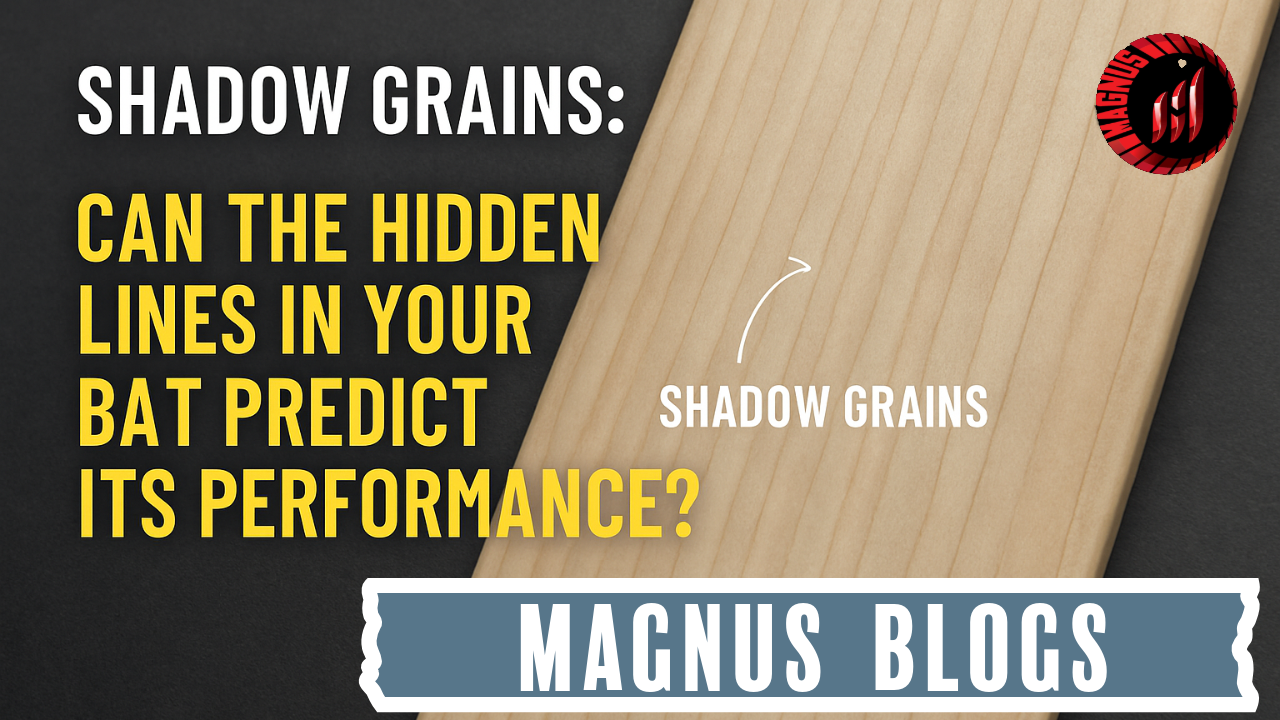A cricket bat is more than just a tool. For many players, it’s an extension of their instincts, their rhythm, and their style. We often judge a bat by its balance, weight, and visible grain structure. But beneath the polished surface lies something rarely discussed: shadow grains — faint, sometimes invisible lines that may hold clues about a bat’s true potential.
Could these subtle features be more than aesthetic quirks? Could they predict how a bat will perform, age, or even evolve with use?
Let’s explore the quiet mystery of shadow grains.
What Are Shadow Grains?
Most cricketers are familiar with visible grains — the straight or curved lines running vertically down the face of a bat. They are used to gauge the quality of the willow. A bat with 6–12 straight grains is often considered ideal: soft enough for performance, yet durable enough to last.
But then there are shadow grains — those faint, ghost-like lines that can appear under certain light, after oiling, or over time as the bat gets used. They often don’t match the symmetry or spacing of the visible grains, and they can even shift subtly as the bat ages.
Where Do Shadow Grains Come From?
Shadow grains are a natural result of the complex structure of willow wood. While the visible grains come from the annual growth rings of the tree, shadow grains can emerge due to:
-
Subsurface grain density changes
-
Moisture content variations during pressing
-
Hidden imperfections or natural knots
-
The orientation and tightness of adjacent grain lines
In other words, they’re part of the bat’s “second personality” — things the eye doesn’t immediately see, but that may influence how the bat behaves over time.
Do They Affect Performance?
While there’s no definitive scientific proof yet, many players report that bats with complex or layered grain patterns evolve differently. Some observations include:
-
Bats with strong shadow grains open up more gradually
-
The emergence of shadow grains can indicate areas of future power zones
-
Some bats feel “dead” at first but come alive as shadow grains start to appear with use
-
Subtle shifts in vibration feedback may align with areas where these hidden grains are strongest
It’s as if the bat is slowly revealing its full character — one knock, one net session at a time.
Can You Detect Shadow Grains?
Yes, but it takes patience and the right conditions:
-
Under strong natural light, especially from the side
-
After oiling the bat lightly
-
Over time, as the bat wears in or is knocked-in
-
By gently tapping and observing changes in surface sheen
Some bat makers and professionals even use angled LED lights to detect these faint markings when grading high-end willow.
Why Should Players Care?
Because it’s not just about choosing a bat — it’s about understanding it. A bat with shadow grains may:
-
Take longer to reach its peak
-
Have a unique blend of power and control
-
Surprise you with performance from areas that seemed average at first
-
Offer a longer performance curve, rather than peaking early and fading
For players who develop a long-term relationship with their gear, this subtle awareness can make all the difference.
Cricket bat types, Cricket equipment in usa, Cricket equipment store, Cricket gloves, Cricket helmet, Cricket kit bags, Cricket retailers, Durable cricket gloves, English willow bats, Icc approved helmets., Kashmir willow cricket bat, Latest kashmir willow bat
